Nottingham Trent University
2012-2015 BA Photography (First Class Honours)
I studied a BA in Photography at NTU, graduating in 2015 with First Class Honours.
It was a thoroughly enjoyable degree that allowed me to hone my craft. I was taught to contextualise our practical work within an historical and theoretical understanding. I learnt to interpret the image as something more than aesthetics, and to assimilate meaning through semantics and visual discourse.
I predominantly used traditional analogue processes, working and making prints in the colour and B&W darkrooms.
My studies culminated in the exhibition of a body of work titled “Trackies and Cherry Blossom”. I have included some photographs from that series, as well as the accompanying text.
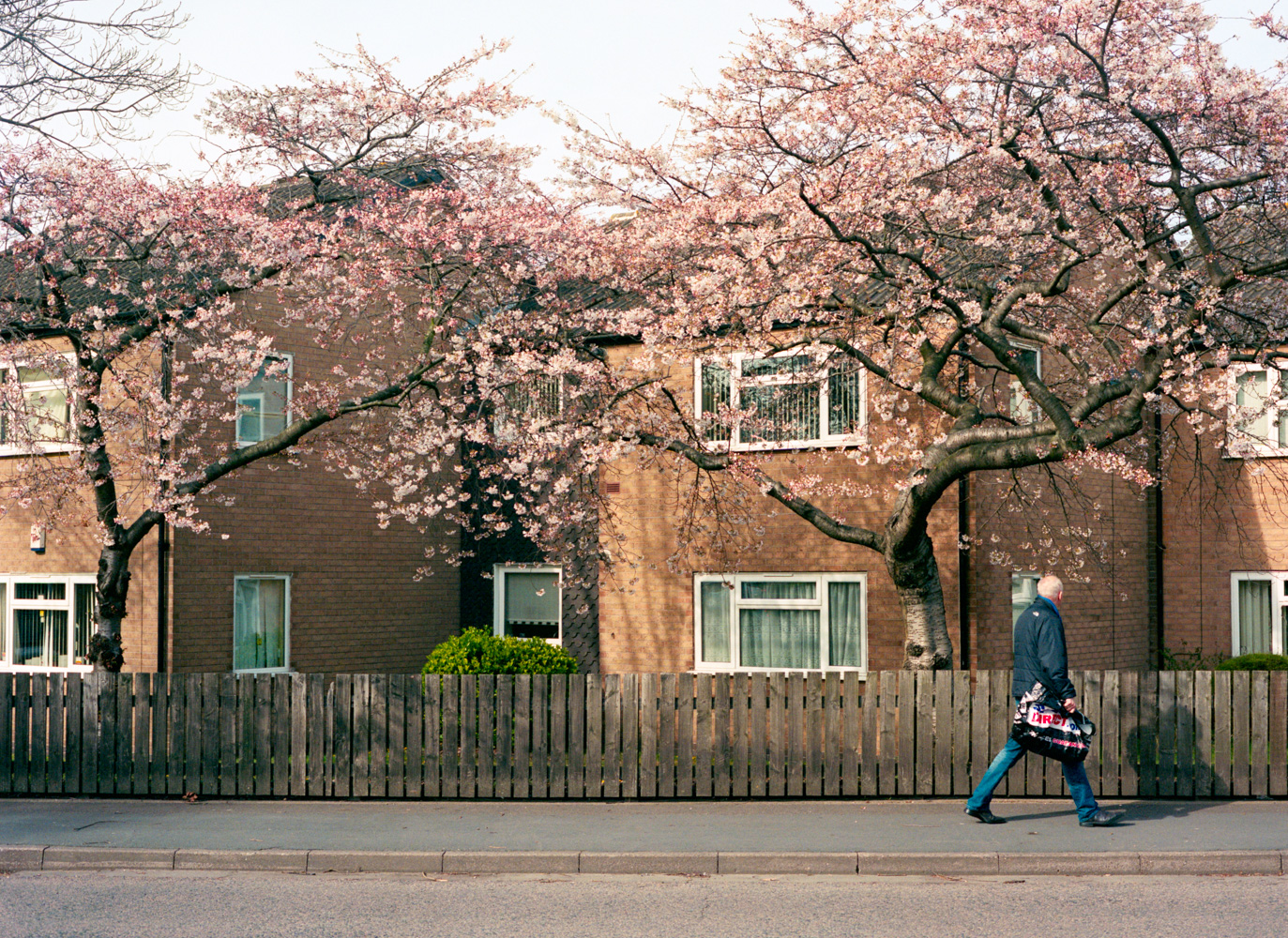
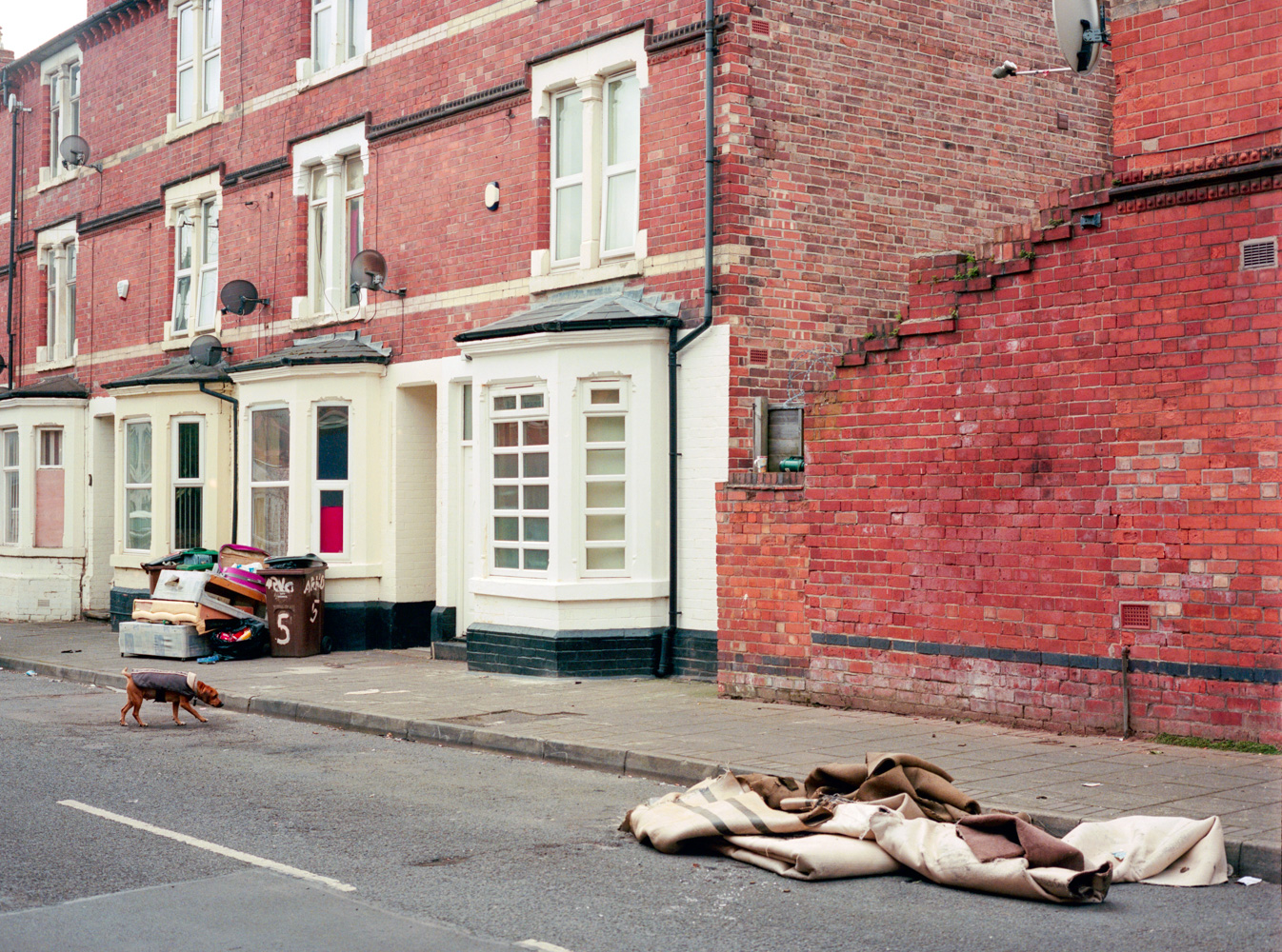
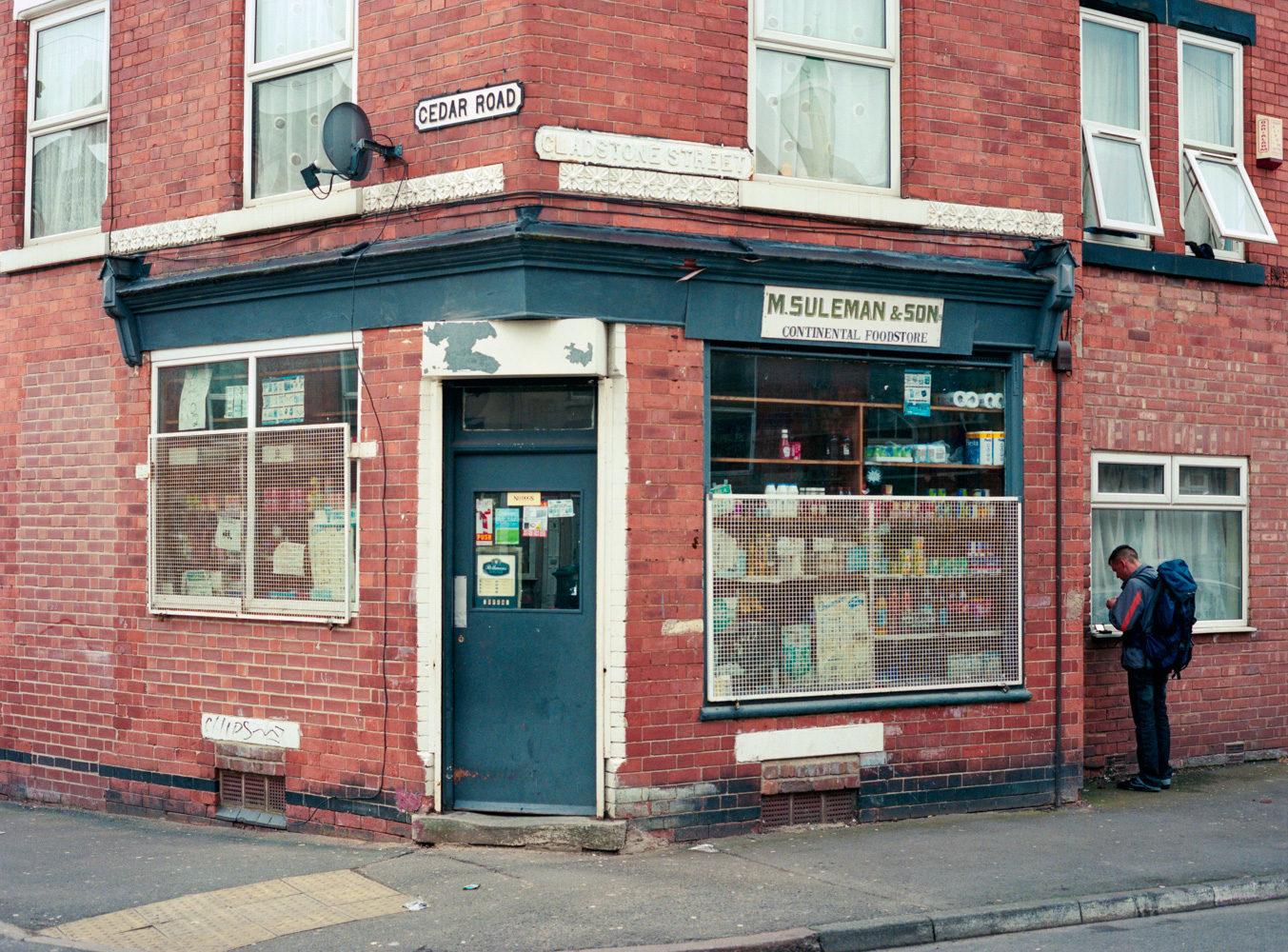
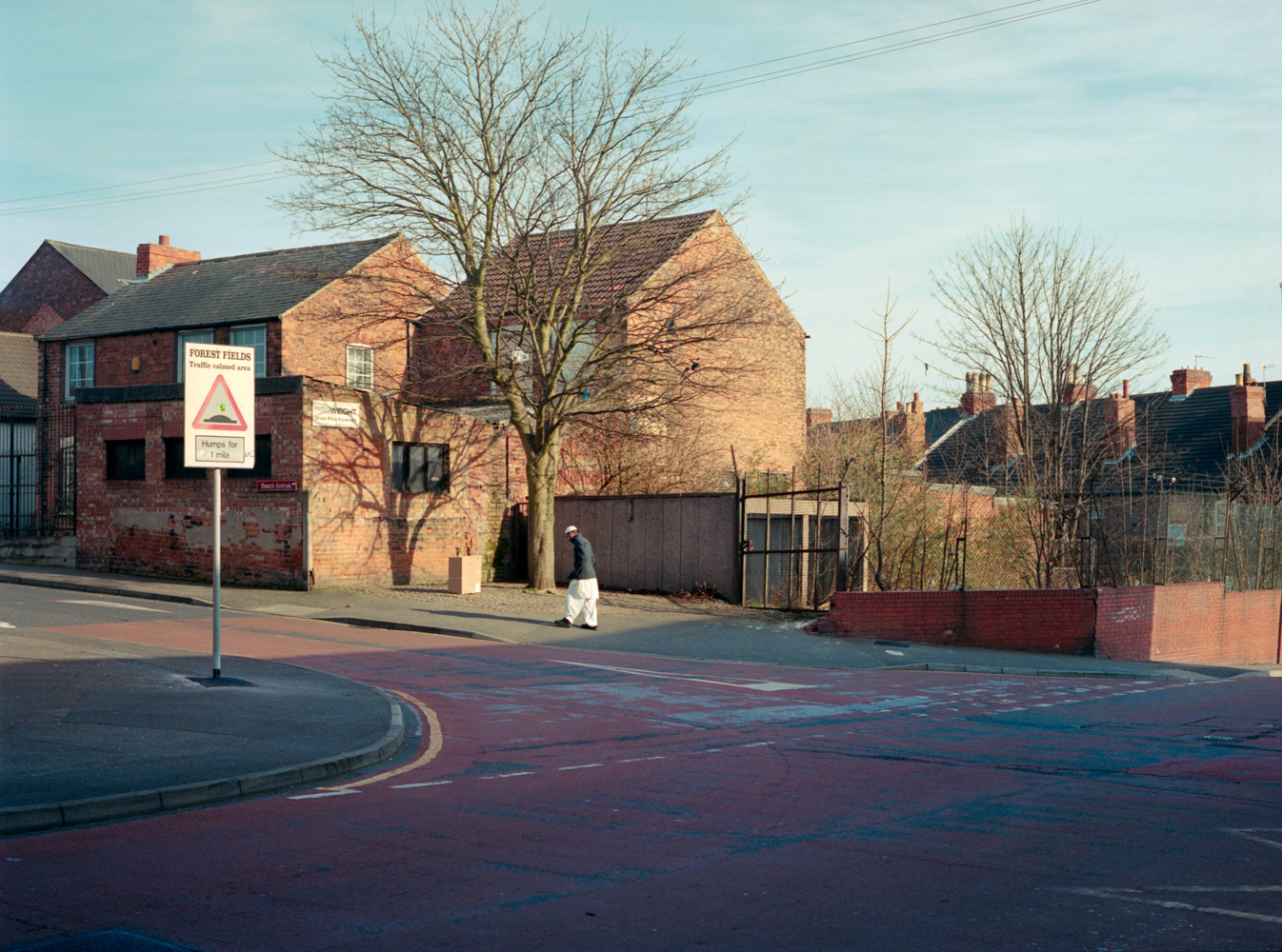
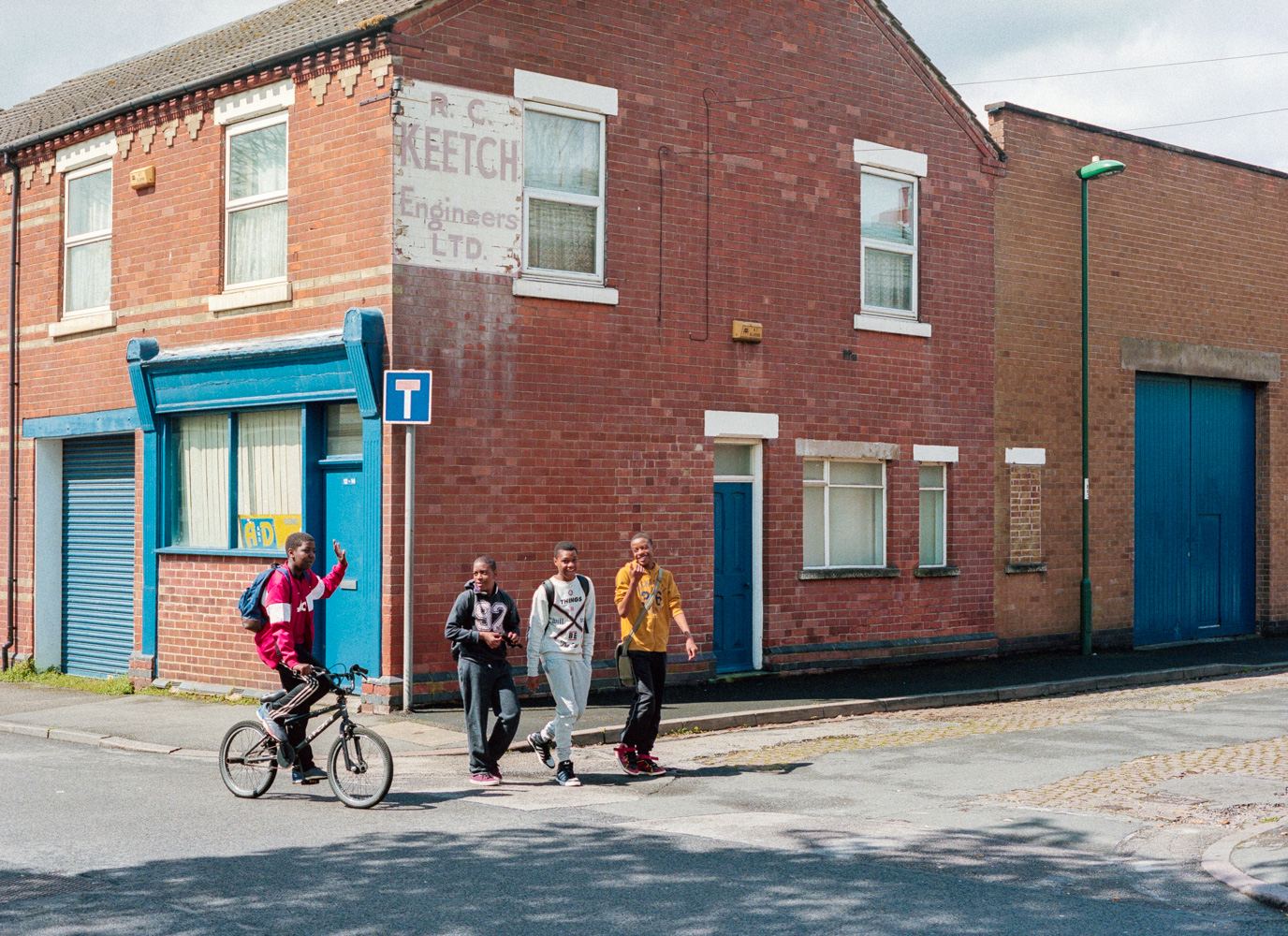
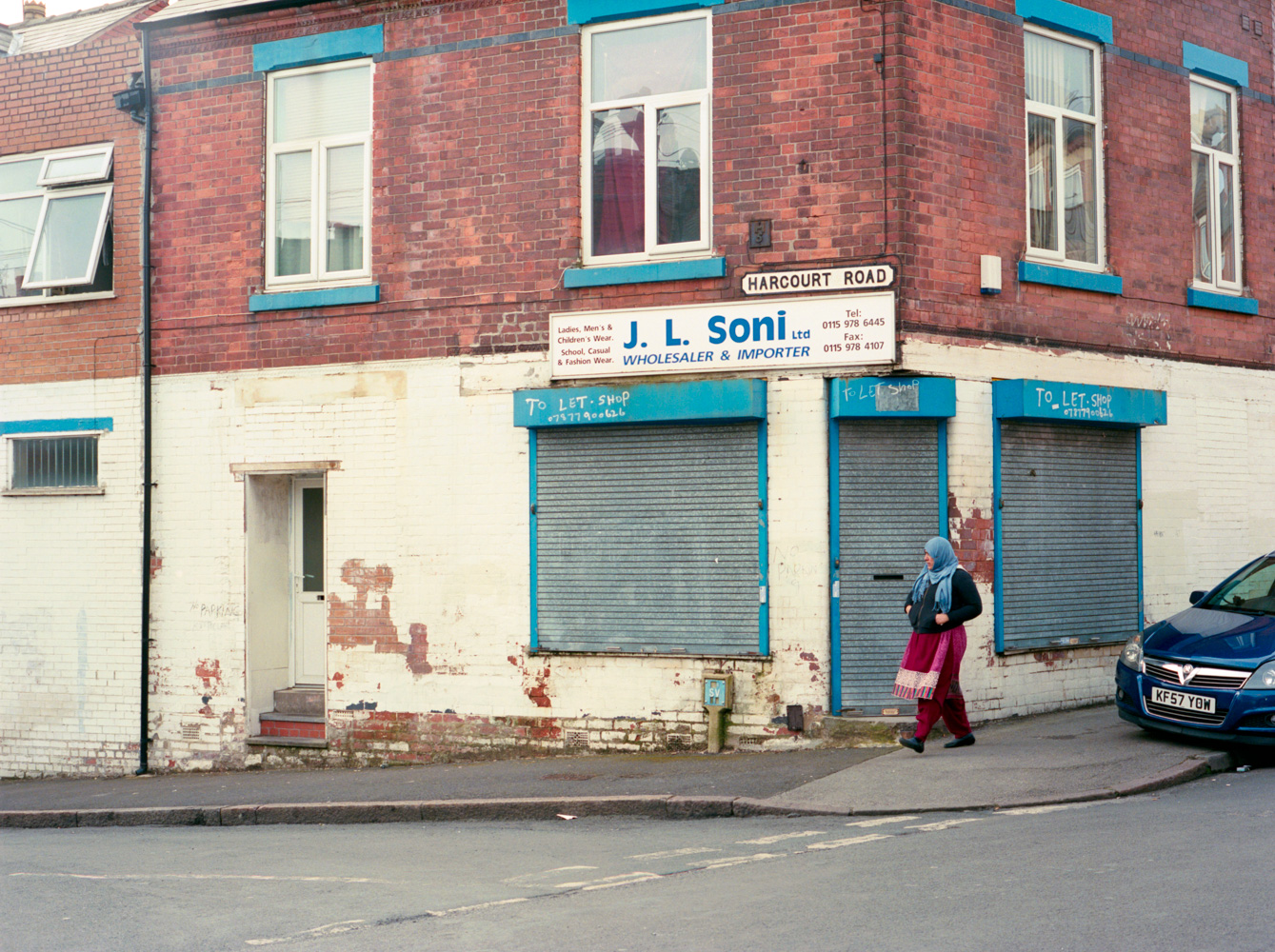
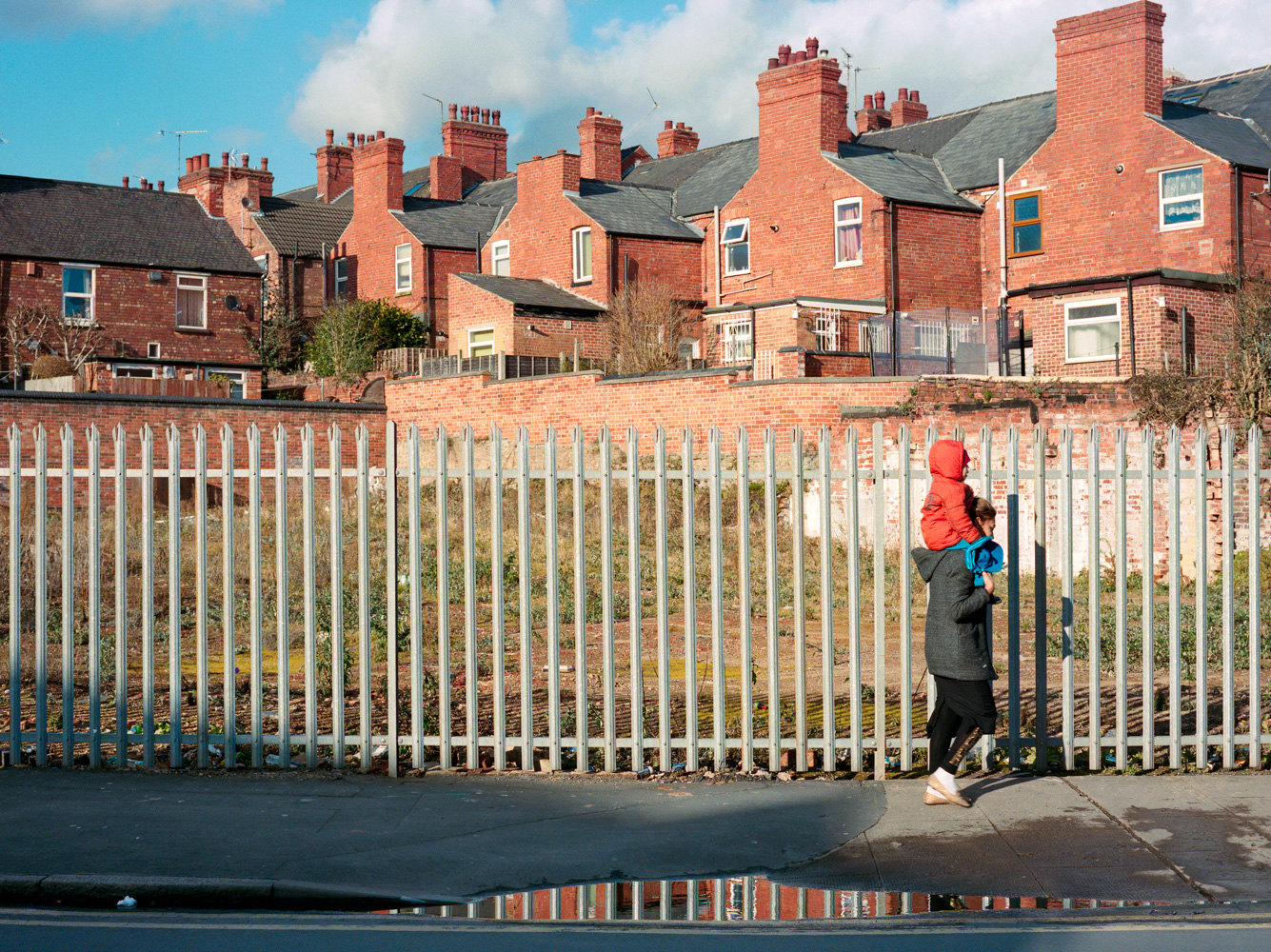
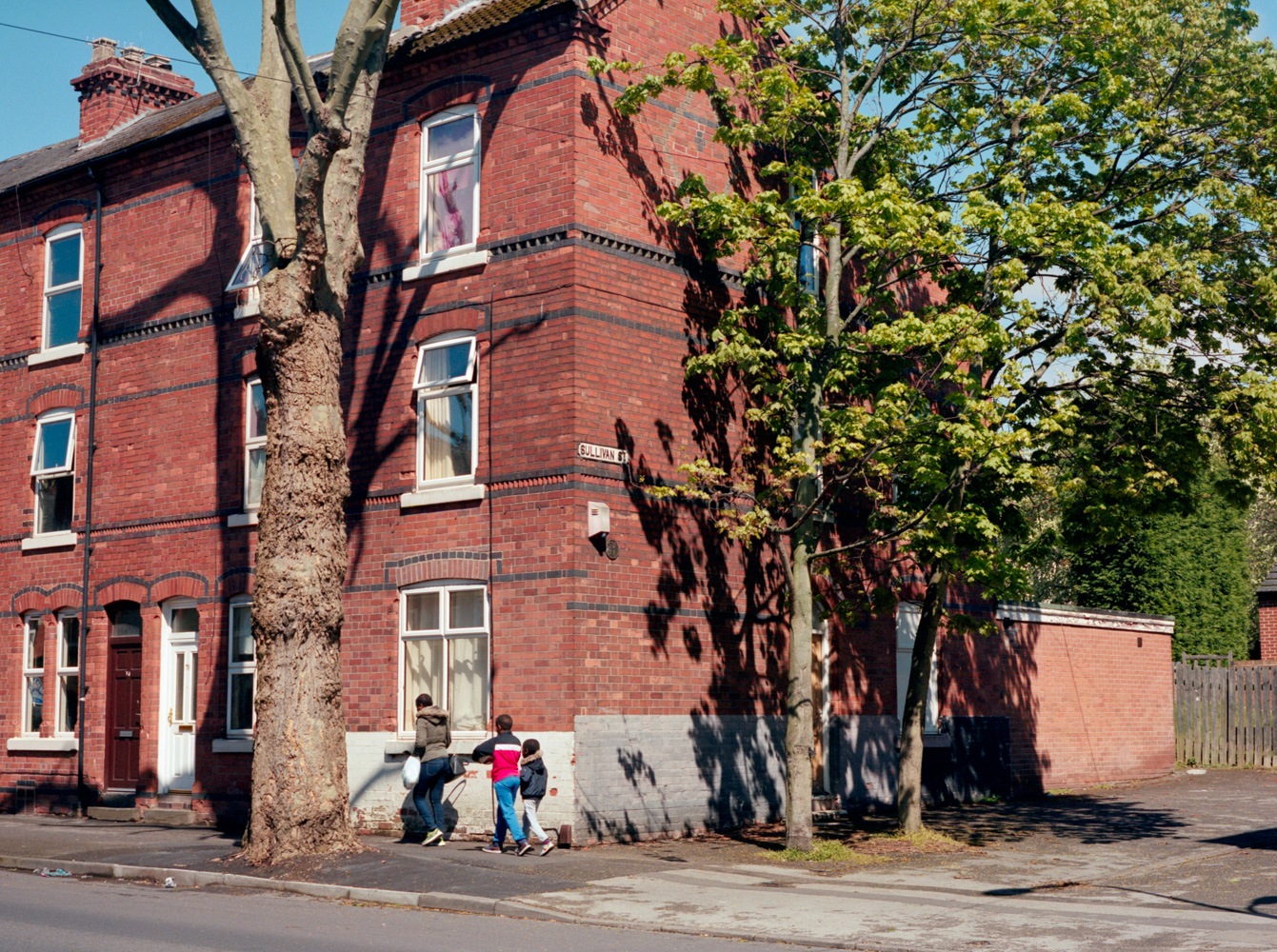

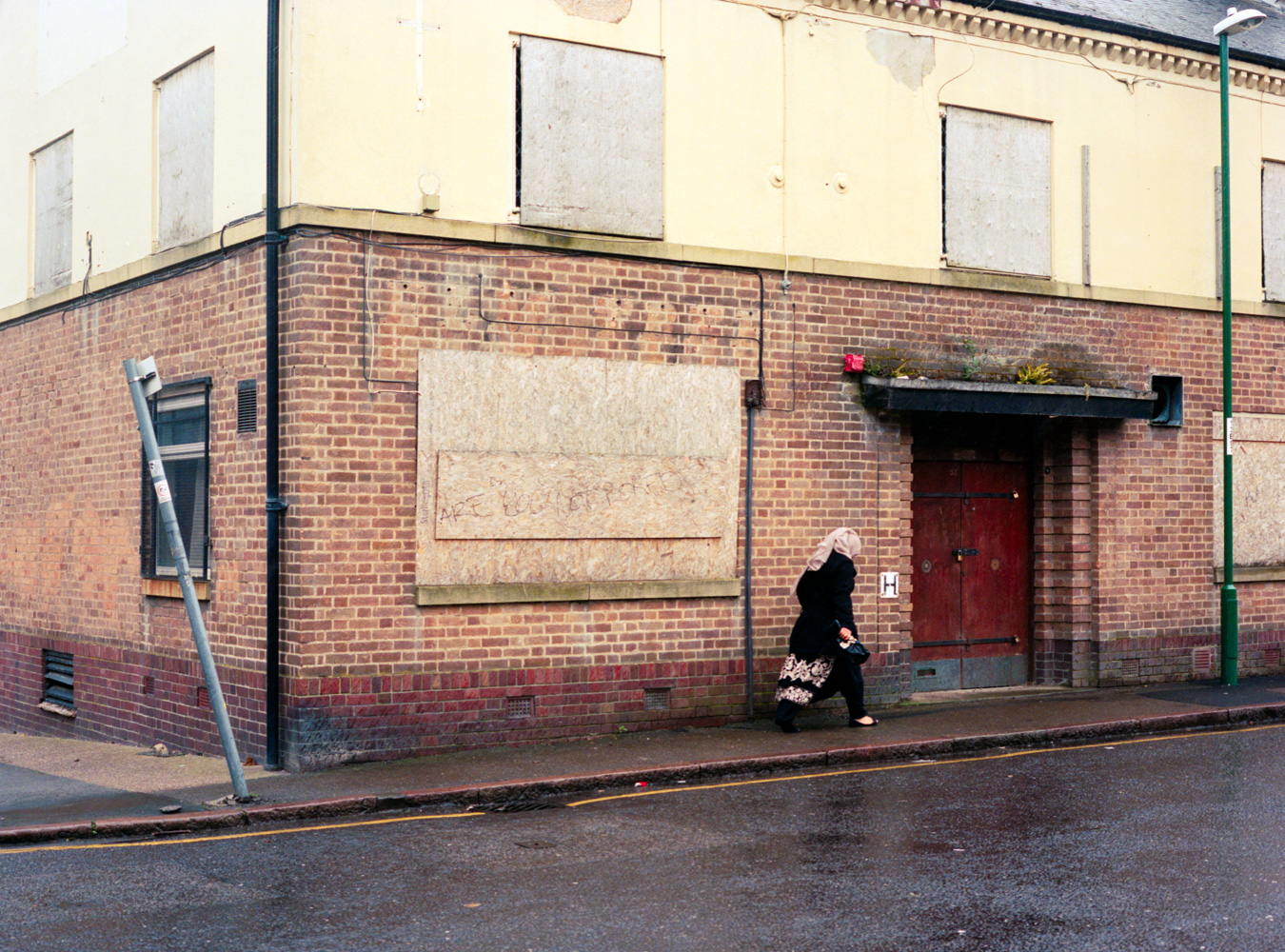
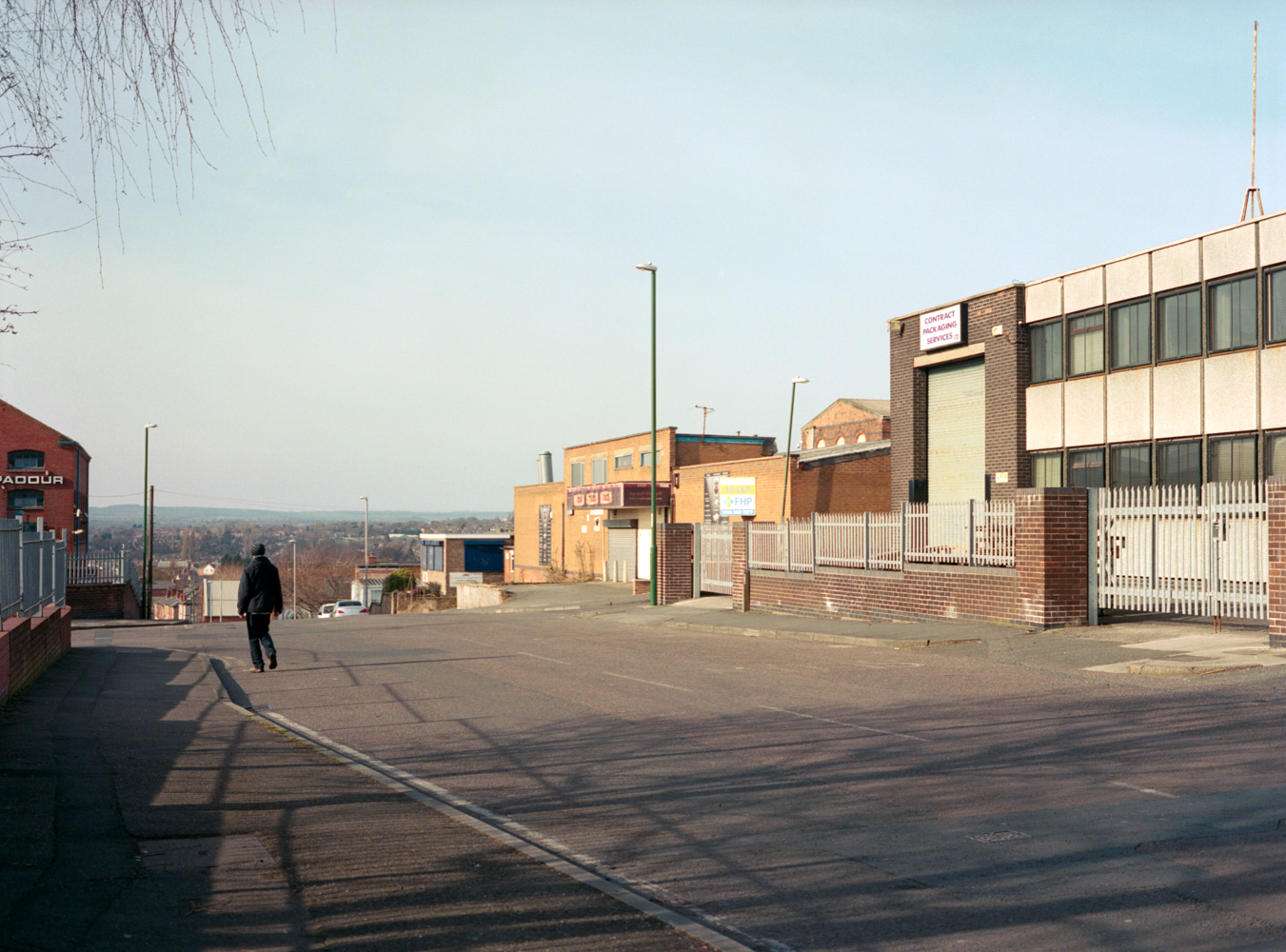
Trackies & Cherry Blossom
Hyson Green, Forest Fields, The Meadows, Radford and Lenton; these are the names of Nottingham’s inner-city neighbourhoods. They are areas that have been impacted by decades of cultural change, typified by a complex balance of ethnic and social diversity; a unique intermingling of traditions, and tolerance. The local economies are fruitful and growing, but there is an acute shortage of jobs and increased levels of poverty. A high population turnover has been damaging to society, limiting the extent of community integration. This is the social reality of the areas that I am representing in my work.
My photographs function as the study of a particular environment; abstractions of the relationship between a location and its inhabitants. They are a temporal comprehension of space and place —understood through Henri Lefebvre’s construct of space as a social dynamic, incessantly in motion, and place as the momentary destinations within this continuous movement. I see the photographed area as an implicit stage. It is a means to witness the performance of routine, the insignificant instances that would otherwise pass by unnoticed. I am interested in transient moments, chance encounters and unexpected occurrences. The sporadic presence of people, comings and goings, ebb and flow. What do trackies and cherry blossom reveal about a place? The people define a place as much as a place defines the people. How does one affect the way that you think about the other? A collision between the persistent motions of everyday life and the slow ageing of the built environment.
My process is deliberately drawn out. My time is spent wandering and wondering, composing and waiting. I position the camera within a carefully considered environment and try to find a moment of intrigue, something to seize onto. Something honest. When I release the shutter, the scene that is appearing in front of me is arrested and given permanence. It is a record of the ‘here and now’, which soon becomes of the ‘there and then’. The resultant photograph provokes meaning, emphasised by the scale of its reproduction. A size that confronts the audience and demands a response; detail is amplified, as we are invited to study and explore the visual clues. It is this relationship, between the spectator and the photograph that insists on the formation of a narrative. It is not as spontaneous as Cartier-Bresson’s decisive moment, nor is it contrived like Jeff Wall’s tableaux. Nevertheless, it serves a purpose; interpretable through the pregnancy of the images, as a means to reflect on society.
My engagement with the communities is open-minded; it does not criticise or exaggerate. I resided in Forest Fields for a year, something that allowed me to view the space with balance; an appreciation for what there was, and an understanding of what there was not. I was positioned as an outsider on the inside, and this afforded me a unique perspective; the foreign became familiar. I saw beauty, or I saw decay. It is my decision, my view of society and indeed the world, which I am translating visually. The onus is on me, as the photographer, to determine how it is perceived. What can be said to be true in the scenes? There is no attempt at deceit, neither is there to manipulate or sensationalise. The pictures that I have made offer a serious portrayal of Nottingham’s inner-city neighbourhoods, the locations and their populaces. They are intended to reveal something, to engage a dialogue on the stresses and tensions within the community.